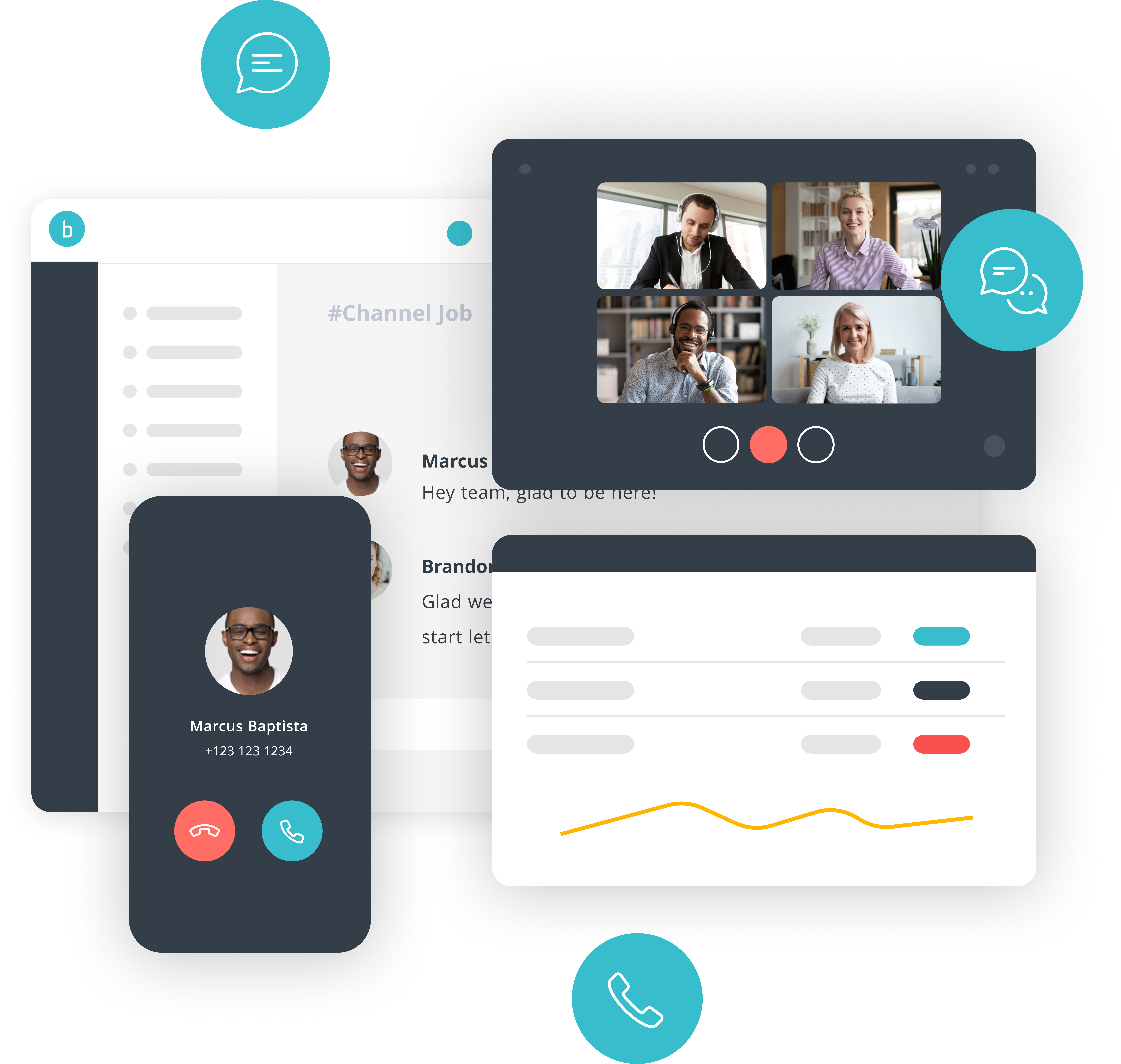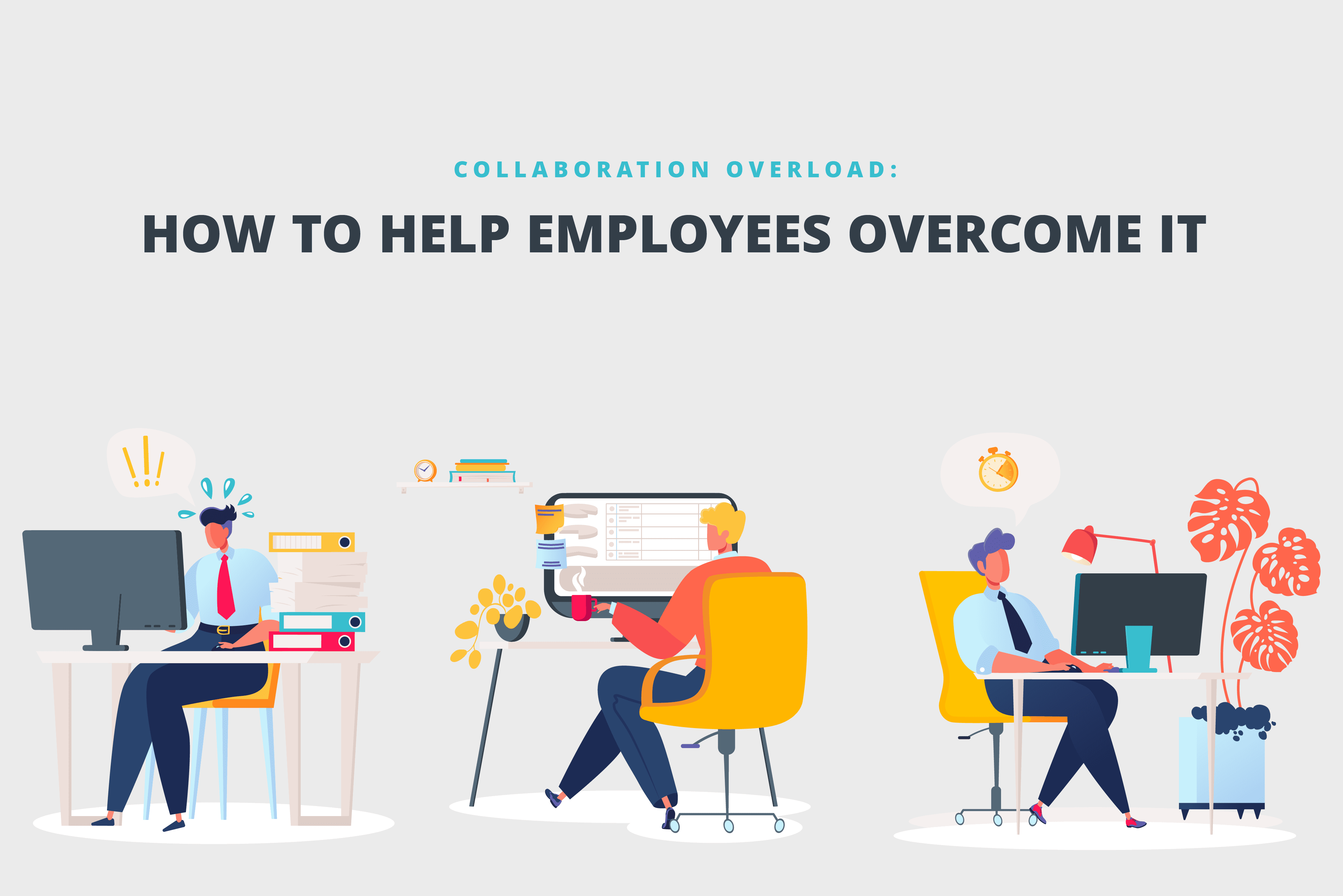Have you ever noticed that you spend more time in meetings, responding to emails or connecting with employees than doing actual work? You’re not alone. According to a Harvard Business Review study, workers spend 80% of their time in meetings and calls, leaving just a small portion of their day for the work they need to complete.
As employees utilize more collaboration tools, they’ll also continue to utilize more of their time on these tools. Thankfully, you can help by finding the right tools for your team and educating them on how best to use them.
What exactly is collaboration overload?
Collaboration overload is when an employee spends more time working on requests or responding to coworkers than on accomplishing their own goals.
At Broadvoice, we’re constantly using collaboration tools to streamline our workload so we understand, firsthand, the effects they can have on employees. To help keep your team from experiencing burnout, we’ve compiled our top tips for combating excessive collaboration.
Find an all-in-one solution
Interestingly enough, having too many collaboration tools can actually have the opposite effect and lead to less productivity. If an employee has to constantly switch between different tools and platforms, it will interrupt their workflow and increase their cognitive load, wearing them out even quicker.
Also factor in that we live in a world of instant gratification. Once an employee hears that all-too-familiar ping of a notification, they will feel they need to immediately respond to it, regardless of what they are doing. If your employees are getting pings on multiple apps, all at the same time, it will quickly begin to overwhelm.
Instead of adding more tools to your team’s plate, try to employ a unified solution. Find a tool that lets your team complete all their most important tasks, all from the same app. For example, the new b-hive Communicator lets employees chat, text, call, and video conference all from the same platform. No more unnecessary back-and-forth with other tools. Communicator’s new, intuitive user interface allows your employees to complete all their tasks from a single window that’s integrated with your business phone number.

Even if you are employing the best tools for your team, it’s equally important to ensure your employees use them properly to keep them from experiencing burnout.
Collaboration best practices
Define clear goals and expectations
To eliminate any confusion or miscommunication, always define clear goals for a project and if possible, have a project kick-off meeting to get the whole team on the same page. Once everyone has their marching orders, the team will have a better understanding of what needs to be accomplished and will be able to work on their own time, without having to constantly check in or ask about the project.
Use the sprint approach
At Broadvoice, we love to approach our work in “sprints.” It can be extremely overwhelming to look at everything that needs to be accomplished at once. Instead, we section off a specific project or task and spend the week working solely on that task. Within that week, we’ll all touch base a few times to collaborate, but otherwise, we work on our own. This method helps alleviate the pressure of constantly switching between multiple projects and makes the time we spend collaborating even more effective.
Limit your meetings
To give your employees some time back, only have virtual or in-person meetings if absolutely necessary. If something can be done over a quick message as opposed to a full-blown video call, opt for that. If you meet less, your employees can use the time they would have spent sitting in those meetings to accomplish all the work they need to get done. This could be game-changing for your team!
Be selective
Collaboration overload is really just another word for app overload. Speak with your team to find what tools work best for them and what tools aren’t working. Always look for a tool that can accomplish multiple tasks as opposed to just one. If you do use multiple tools, be sure they all integrate well with each other for a seamless work experience. The fewer tools, the better!
Collaboration tools are the future of the workforce. Remember: it’s all about selecting the right tools (hello Communicator) for your team and educating them on how best to use them to prevent burnout.










